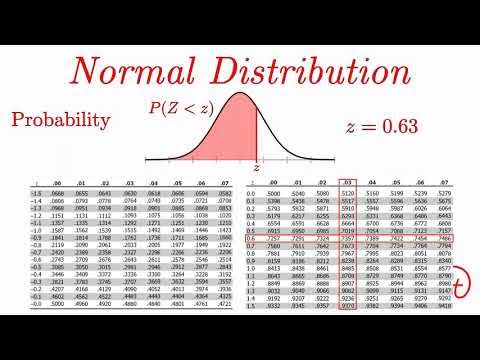Interpreting Confidence Intervals EXPLAINED in 3 Minutes with Examples
Summary
TLDRIn this video, Mark from Ace Tutors explains the concept of confidence intervals, using the example of estimating the average amount of sleep students get. He clarifies that a 95% confidence interval, such as 7.5 to 8.5 hours, doesn’t mean there's a 95% chance the true mean lies within this range. Instead, it means that if we repeatedly collected samples and calculated intervals, 95% of those intervals would contain the true mean. Mark also emphasizes the importance of using the word 'confident' instead of 'chance' when interpreting confidence intervals, highlighting the precision needed in statistical language.
Takeaways
- 😀 Confidence intervals estimate a population parameter, such as the average amount of sleep, using sample data.
- 😀 A 95% confidence interval means that if you repeatedly sampled the population, 95% of the intervals would contain the true mean.
- 😀 The true mean is a fixed value, either inside or outside the confidence interval, but we can’t know which without complete data.
- 😀 The common misconception is that a confidence interval has a 95% chance of containing the true mean, which is incorrect.
- 😀 Confidence intervals are based on sample statistics, meaning each sample will produce a different interval.
- 😀 Statisticians emphasize using the term 'confident' rather than 'chance' or 'probability' when interpreting confidence intervals.
- 😀 The shorthand version '95% confident the true mean is between X and Y' is often used, but should be stated carefully.
- 😀 When interpreting a confidence interval, focus on the frequency of containing the true mean in repeated sampling, not individual probability.
- 😀 The confidence level (like 95%) represents the long-term success rate of capturing the true mean in many intervals.
- 😀 A confidence interval provides a range where we are confident the population parameter lies, but it doesn’t guarantee it’s within that range.
- 😀 Understanding and interpreting confidence intervals accurately is essential for making informed statistical conclusions.
Q & A
What is the main focus of the video?
-The video explains how to correctly interpret confidence intervals and clarifies a common misconception about the probability of the true mean falling within the interval.
What is a confidence interval?
-A confidence interval is a range of values that is used to estimate the true population parameter (e.g., mean or proportion). It gives a sense of where the true value is likely to lie, based on sample data.
Why is it wrong to say that there is a 95% chance the true mean is within the confidence interval?
-This is incorrect because the true mean is a fixed value. It either falls inside or outside the interval, but we cannot assign a probability to this since we only estimate it using sample data.
What does a 95% confidence interval actually represent?
-A 95% confidence interval means that if we repeatedly took samples and calculated intervals, 95% of those intervals would contain the true population mean. It's about the reliability of the estimation process, not about the true mean itself.
How do sample variability affect the confidence interval?
-Each sample will produce a different mean and standard deviation, leading to a different confidence interval. However, if you repeat the process many times, 95% of the intervals will include the true population mean.
What is the importance of using the word 'confident' in interpreting confidence intervals?
-The word 'confident' emphasizes that the interval is a result of repeated sampling, indicating a level of certainty in the estimation process. Using 'chance' or 'probability' implies randomness about the true mean, which is incorrect.
What does it mean to be 95% confident about a confidence interval?
-Being 95% confident means that if we were to repeat the sampling process many times, 95% of the confidence intervals generated from those samples would contain the true population parameter.
Can the true mean fall outside the confidence interval?
-Yes, the true mean could fall outside the confidence interval because the interval is an estimate based on a sample. It’s possible that the interval does not capture the true value, but we can only state the reliability of the method.
What is the key difference between using 'confidence' and 'chance' in statistical language?
-'Confidence' refers to the reliability of the estimation process and is based on the method used, while 'chance' implies a probability of the true mean being within a given range, which is incorrect because the true mean is a fixed value.
What is a common misunderstanding students have about confidence intervals?
-A common misunderstanding is that students believe there is a 95% chance the true mean is inside the confidence interval. This reflects a confusion between the interval being a probability statement and the true mean being a fixed value.
Outlines

This section is available to paid users only. Please upgrade to access this part.
Upgrade NowMindmap

This section is available to paid users only. Please upgrade to access this part.
Upgrade NowKeywords

This section is available to paid users only. Please upgrade to access this part.
Upgrade NowHighlights

This section is available to paid users only. Please upgrade to access this part.
Upgrade NowTranscripts

This section is available to paid users only. Please upgrade to access this part.
Upgrade NowBrowse More Related Video

Confidence Intervals Explained

Normal Distribution EXPLAINED with Examples

Pendugaan Interval untuk rata rata sampel besar n lebih 30

Mutually Exclusive vs. Independent Events EXPLAINED in 4 minutes

AP Precalculus – 1.2 Rates of Change

Mean, Median, and Mode of Grouped Data & Frequency Distribution Tables Statistics
5.0 / 5 (0 votes)